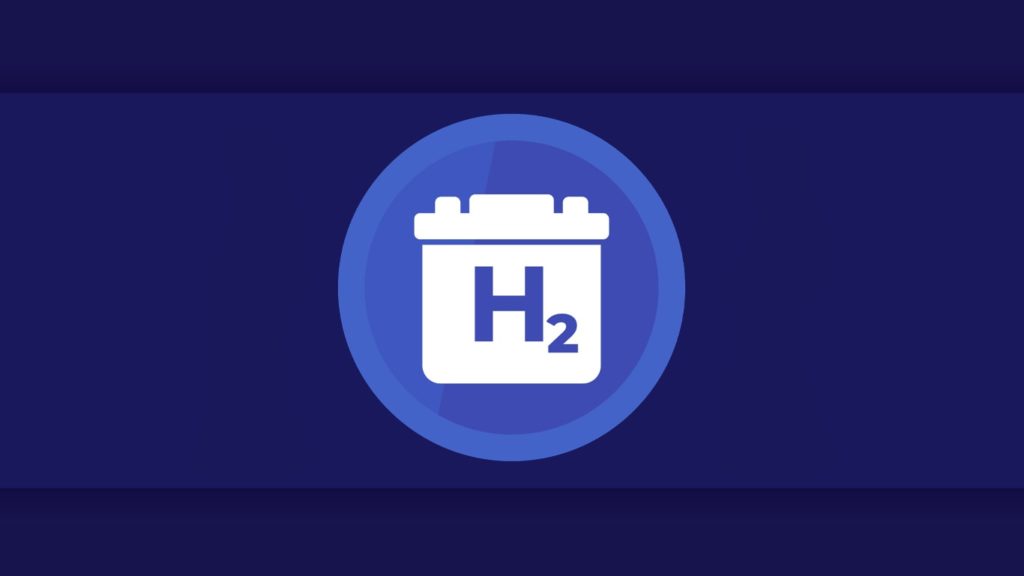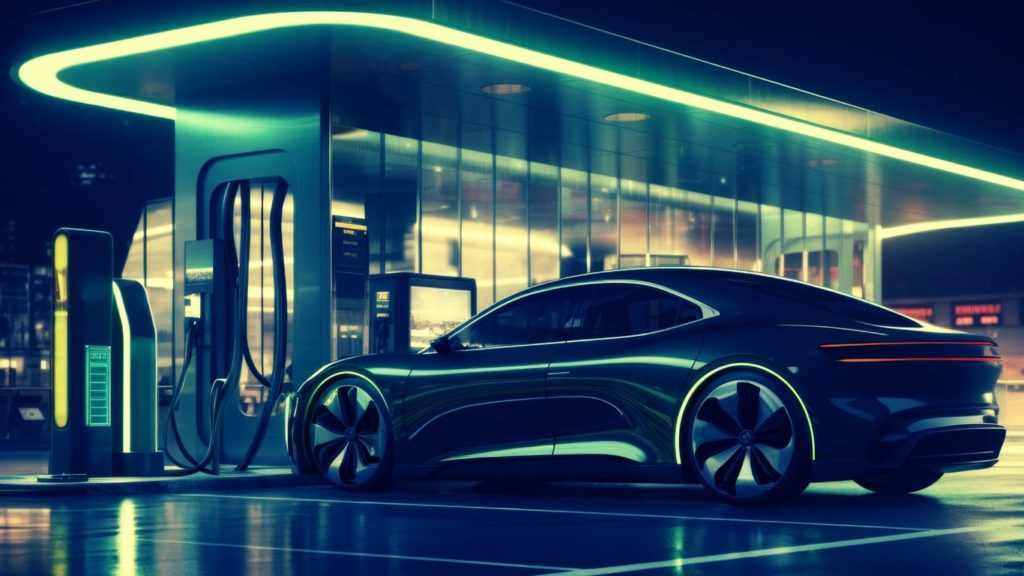
Electricity is an integral part of the modern world. It’s often produced through combustion, although the byproducts of the process are harmful to human health and the environment. Thus, a more beneficial way to generate electricity is through fuel cells. Instead of combustion, the electrochemical reaction in fuel cells generates it. This method has wide applications and is immensely important for keeping up critical facilities running. In this study, we shall explore the fuel cell definition in depth along with its functionality, types, and application. Let’s get rolling.
What is a fuel cell?
A fuel cell is a device that contains a cathode, anode, and electrolyte membrane and produces electricity through chemical reactions. The electrolyte of the fuel cells carries electrically charged particles between electrodes. It also includes a catalyst for speeding up the reactions.
Additionally, unlike batteries, fuel cells don’t need to be recharged. They work by producing electricity as long as the fuel source is provided. This makes the cell an efficient and reliable source of power.
Furthermore, fuel cells require hydrogen and oxygen for generating electricity. They combine to form a harmless by-product that is water. The best part about it is that it produces electricity with little pollution, making this a clean power source.
Also, the distinguishing factor of fuel cells is that it has an efficiency of over 80%, whereas the efficiency of combustion engines and power plants is 25% and 35% respectively.
How do fuel cells work?

Generally, the function of fuel cells includes hydrogen atoms passing through the anode and oxygen entering through the cathode. On the anode side, the hydrogen atoms are stripped from their electrons, making them ionized.
Then, the electrons are forced through the circuit whereas the protons are passed through the porous electrolyte membrane. The electrons generate the electric current and excess heat. The protons, electrons, and oxygen at the cathode side create water molecules.
Since electricity is produced through chemical reactions, the efficiency is much higher than combustion engines. Also, this attribute of the fuel cells can be further increased by combining them with heat and power systems.
That way, the waste from the fuel cells can be used for cooling and heating applications. Alongside this, the fuel cells can be stacked and combined to form large systems, where they can provide electricity directly to the utility grid.
Types of fuel cells
Depending on the kind of electrolyte used, a fuel cell is classified into the following types.
1. Alkali fuel cells
The electrolyte used in the alkali fuel cells is potassium hydroxide. This fuel cell operates on compressed hydrogen and oxygen. Its power-generating efficiency is up to 70% and operates at the temperature of 150 to 200 degrees Celsius.
An example of this is the alkali fuel cells that were used in the Apollo spacecraft for providing electricity and drinking water.
2. Phosphoric acid fuel cells
As the name suggests, phosphoric acid is used as the electrolyte in phosphoric acid fuel cells. Its power efficiency ranges from 40% to 80% and works at temperatures of 150 to 200 degrees Celsius. An example of this is the phosphoric acid fuel cells used in hospitals, where the waste heat is used for other areas requiring a supply of reliable power such as laundry.
3. Molten carbonate fuel cells
The electrolyte utilized in the molten carbonate fuel cells includes high-temperature compounds of salts carbonates. Its power efficiency is between 60% and 80% and operates at a temperature of about 650 degrees Celsius. It prevents carbon monoxide poisoning through elevated temperature.
Furthermore, the waste heat can be recycled to produce additional electricity. An example of this is molten carbonate fuel cells used at stationary power plants.
4. Proton exchange membrane fuel cells
Proton exchange membrane fuel cells use a proton-conducting polymer membrane as the electrolyte. Their power efficiency varies between 40% and 50% and operates at a temperature of approximately 80 degrees Celsius. These fuel cells can work at a low temperature.
A notable representative of this kind is a proton exchange membrane fuel cell used in recreation and lightweight vehicles.
5. Solid oxide fuel cells
The hard ceramic compound of metal oxides is utilized as an electrolyte in solid oxide fuel cells. Its power efficiency is about 60% and functions at a temperature of about 1000 degrees Celsius. These fuel cells have high operating temperatures, making them unsuitable for transportation and portable applications. An example of this is solid oxide fuel cells used in residential applications and combined cycle power plants.
Applications of fuel cells
Before we dive into two notable applications of fuel cells, we suggest you learn what the pros and cons of a fuel cell are. With that said, let’s proceed. The following are some of the applications of a fuel cell:
1. Public transportation
Over several years, various projects have explored the usage of fuel cells for public transportation. In fact, major cities across the globe such as Chicago, Vancouver, and London have experimented with hydrogen fuel cells-powered buses.
Not only this, Germany has trains powered by hydrogen fuel cells. Other countries such as the United States, Japan, and South Korea are working on launching other models within the next few years.
The aerospace industry also experiments with hydrogen fuel cells. A handful of projects are focusing on powering air vehicles with hydrogen fuel cells for day and night continuous flights.
Furthermore, this type of fuel cell can be incorporated into personal vehicles. A couple of examples of such vehicles are Toyota Mirai, Hyundai Nexo, and Honda Clarity. Also, businesses are moving toward hydrogen fuel cells to power vehicles and machines involved in warehouse logistics.
2. Backup power generation
Fuel cells are used as generators of backup power for systems where continuous uptime is critical. Traditional technologies require high maintenance and can be unpredictable at times. Hence, there is a need to replace them with a more reliable and secure system.
The fuel cells meet the need for an uninterruptible power supply. For instance, hospitals and data centers choose fuel cells to meet critical backup power needs.
Impact of Fuel Cells
Since their inception, fuel cells have garnered intense debate regarding their impact on the environment, usability, and practicality. However, one has to agree that despite enormous technological challenges and current limitations, fuel cell technology is still a plus for the environment as a more sustainable and greener alternative to fossil fuels.
It has proven itself to be flexible enough with sufficient power and propulsion to be applicable on a broader spectrum, ranging from transportation to industrial use. On the other hand, one can’t simply ignore the repercussions we might have to face if we adopt this technology. Thus, it becomes pertinent that we study the impact of fuel cells, both positive and negative.
Positive impact of fuel cells
We have listed a few positive impacts that fuel cell technology has on our environment and society:
- Fuel cells are much more sustainable than fossil fuels and thus, more beneficial for the planet.
- Green Hydrogen fuel cells are the cleanest fuel sources.
- Not only is Hydrogen readily available in our environment, but it is also abundant in nature, making fuel cells a much more accessible energy source.
- It can operate at comparatively lower or higher temperatures, making it relatively durable.
- As a technology, fuel cells can be used almost anywhere, from powering up your laptops to energy grids.
- It has the potential to revamp transportation.
- There is no need to charge or manage the batteries.
- Fuel cells are much more efficient than traditional combustion fuels.
- The technology is scalable, thus making logistics much easier.
- There is almost no greenhouse effect or carbon emission, so fuel cells do not leave a carbon footprint.
- It helps reduce pollution and improve air quality.
Negative impact of fuel cells
Keeping with the reality, fuel cells are not some godsend solution to all of our problems. In fact, they have a ton of their own problems to deal with, such as:
- Extracting and harnessing hydrogen, despite its abundance, is a challenge as it can’t exist on its own.
- The technology is very costly.
- Huge investments are required before fuel cells can be the norm.
- The raw materials that go into the electrolysis process and the battery container are rare and costly.
- There are also many regulations and policies that prevent the adoption of fuel cells.
- Storing hydrogen is a challenge.
- We lack the basic infrastructure that can make this technology viable.
- The fuel cell technology is not safe, as hydrogen is a highly flammable source of energy.